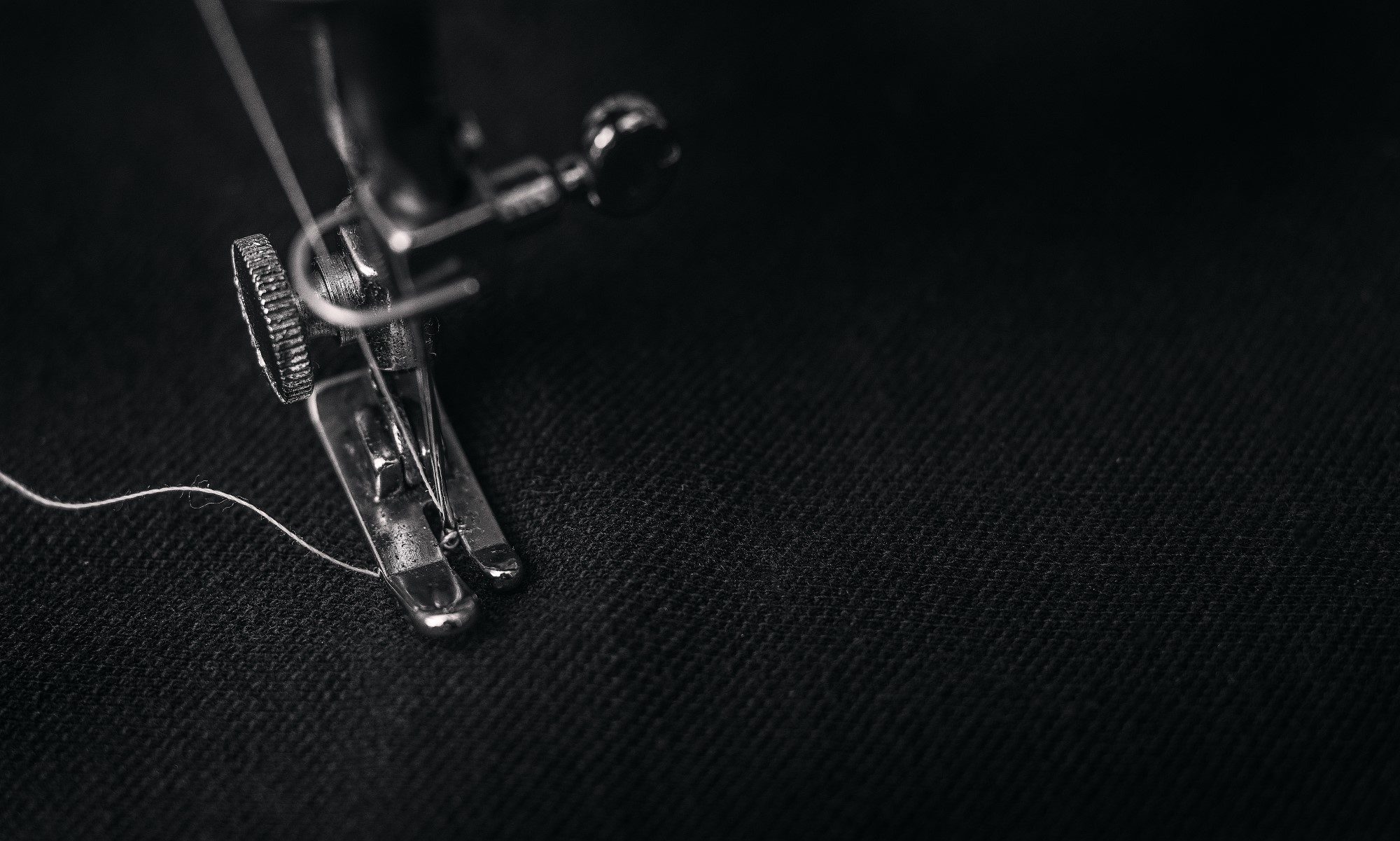[[https://www.quiltingmachinesbryan.com]], [[Sewing Machines]]
Threading a serger sewing machine is frequently very difficult. While conventional sewing machines, use only two thread, sergers may use up to eight. Therefore it is much more challenging to thread than regular sewing machines.
Above the thread cones behind the machine is a tall wire thread rack. The threads are drawn up and over the rack. They then are threaded through guides, tension assemblies, some more guides, and finally to their deliver device. It is so easy to get the threads tangled that you need to be careful.
Like on a regular sewing machine, the needles on a serger are used to pull the thread through the fabric. Once the needles reach their lowest position and begin to rise, a thread loop forms. The lower looper moves right to pick up the needle threads.
Then the upper looper moves left picking up the needle threads and lower looper threads drawing them around the stitch finger. All of this produces a wrap around the edge of the fabric known as an overlock stitch.
Certainly, there are many different models of serging machines and everyone has its special way to achieve the threading process; they are all about the same.
The first step in threading a serger is to lift the presser foot lever. This is the same as threading an ordinary sewing machine. When the presser foot is raised, it releases the tension assembly pressure. Next, draw the thread to be used in the upper looper up and over the thread rack. Check your user’s manual for details on wrapping the thread through the guides and follow the threading down to the top of the serger.
Needles are the last things threaded. To do so make sure to thread all of the guides and take up lever leading to the needles. Since there is often more than one needle, it can be awkward to thread them without the use of tweezers of serger needle threader.
Once you finish threading the serger, check the tensions. With the presser foot up, gently pull some thread from the upper, the lower looper, and each needle. You should feel the very little drag. With the presser foot down, repeat the process. You should feel significant resistance on each thread.
Periodically, threads break while serging. There can be several causes for this ranging from faulty thread to burrs on thread line. When thread breaks, remove all the threads.
I know it is painful but do it. Examine the thread line for any rough surfaces on which the thread might snag. Then rethread the machine lower looper first, upper looper, and finally the needles.
If you need to change colors or cones of thread, you can cut the current thread just above the cone and tie it to the new cone.
Then carefully advance the thread through the serger making sure the knot does not snag or jam.
Errors in threading result in messed up stitches. Missed guides, improperly seated tensions, snags, and twists can do havoc to stitches. If your serger is not making proper stitches, re-thread
An advanced air threading system by Janome makes all other serger threading systems obsolete. In less than a minute, you can thread your serger with just the press of a lever. Frustrations over threading are gone. Thread in any order too. Janome puts an end to threading hassles.
